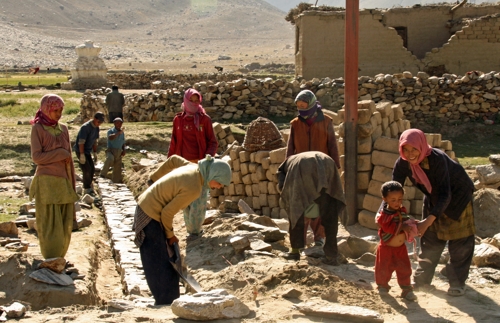In Fund a Greenhouse:

Greenhouse Design
Our greenhouses are designed to trap sunlight during the day to enable the photosynthesis process and retain heat at night to prevent plants from freezing in the sub-zero temperatures.
Various methods of insulation are required to stabilise indoor temperatures and minimise heat loss.
Collection
Greenhouses are built on a south facing east-west axis to maximise the collection of solar radiation during the day.
The roof is covered with transparent polythene sheeting, which allows radiation to pass through and prevents heat loss. Glass has a higher transmission and retention rate, but is more expensive and harder to transport and maintain.
Storage
Heat is stored in the walls and floors then slowly released throughout the greenhouse at night.
Walls are made from locally produced mud bricks or rammed earth and triple layered and insulated with straw to retain the heat.
Release
As temperatures drop, the stored heat is slowly released, maintaining a constant temperature at night.
Manually operated ventilators are also installed to release excess heat during summer months.
Containment
To further control heat retention, the inner west wall is painted white to reflect the morning sun. The inner east wall is black to absorb and store heat until it is released in the evening. The bottom north wall is painted white and upper part black.
A solid roof is installed on the north side to limited heat loss and sloped between 30°– 40 ° to prevent shading and damage from snowfall.
Greenhouses vary from 10 to 20 metres long depending on community requirements. Costs for each greenhouse depend on size and location.
